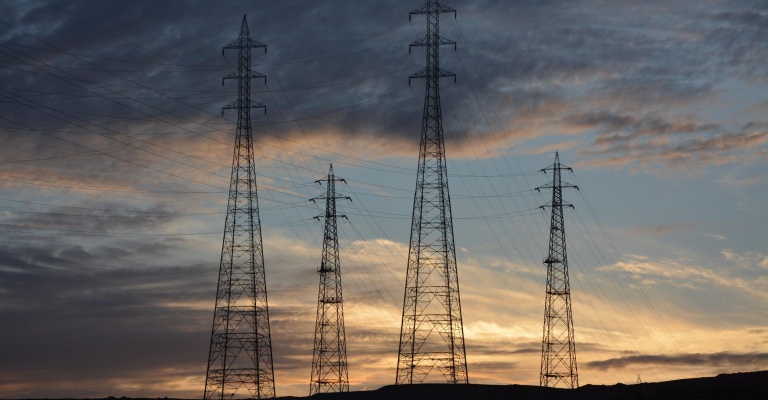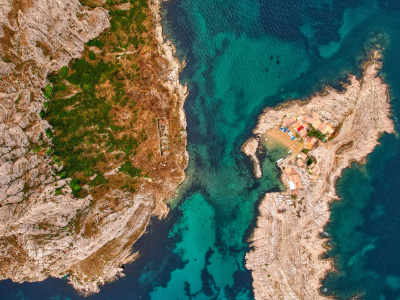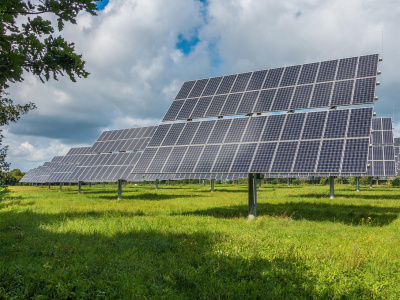
Seizing the moment for North African green industrialisation
Opportunities have aligned for North Africa to become central to the EU-Mediterranean green transition. However, the window of opportunity is narrowing as projects stall due to high financing costs, weak demand and fragmented policy. Swift action is essential to convert the region’s vast renewable energy potential into a competitive green industrial anchor for the entire Mediterranean.
Summary
North African economies are at the heart of an emerging EU-Mediterranean clean energy and industrial landscape. The region holds a triple opportunity around interconnections, hydrogen and clean fuels, and low-carbon manufacturing. Together, these can anchor large-scale renewable deployment, support the tripling of renewables deployment across the Mediterranean and position North Africa as a green industrial hub.
Yet the window of opportunity may be narrowing. Despite ambitious plans, project pipelines are shrinking amid high financing costs, weak demand signals for green hydrogen and low-carbon goods, and mounting competition from other regions. The EU’s new Pact for the Mediterranean and forthcoming T-MED platform recognise the region’s potential, but fragmented finance and regulatory uncertainty continue to hold back progress.
Turning potential into reality will require clearer policy signals, targeted financial de-risking, and stronger domestic markets to complement export opportunities. Governments and partners need to act swiftly to convert the region’s renewable energy potential into a competitive edge, anchoring sustainable growth, industrial transformation, and a more balanced green partnership across the Mediterranean.
Introduction
The Mediterranean offers great clean energy opportunities. With world-class solar and wind potential, established industrial capacity, and proximity to European markets, North African economies are especially well placed to become key players in an emerging EU-MED green energy and industrial landscape. Egypt and Morocco, in particular, have set their sights on becoming frontrunners in green hydrogen and low-carbon manufacturing. This matters because the economics of renewable energy can alter the location of industrial opportunities. Electricity and hydrogen are costly to transport. Regions that can produce low-cost renewable power and convert it into energy-intensive, yet low-carbon, goods are well-positioned to attract investments and jobs. Yet despite ambitious targets and strong fundamentals, Mediterranean green industrialisation faces mounting challenges. Project pipelines are shrinking, and financing conditions remain difficult. To seize the moment, governments and partners will need to act decisively on three fronts:
- Policy certainty and market signals for hydrogen derivatives and low-carbon industrial goods;
- Targeted de-risking to overcome capital market asymmetries and preserve geographic advantages; and
- Proactive industrial policy planning to build domestic and regional markets
A triple clean energy opportunity The region today presents a triple clean energy opportunity, spanning interconnections, hydrogen and clean fuels, and energy-intensive manufacturing. It is the interaction between them that positions the region for large-scale renewable deployment: interconnection opens larger markets for variable renewables, hydrogen and clean fuels create new export pathways, and energy-intensive industries anchor stable long-term demand for both electricity and molecules.
|
An interconnected energy system
Bi-directional electricity trade between North and South Expands the market for variable renewables Emerging corridors and private projects to enable large-scale PPAs
|
|
A hydrogen and clean fuels hub
Large-scale green hydrogen and power-to-X development Using and upgrading existing pipeline and port infrastructure Early momentum from Morocco, Egypt and Tunisia |
Unlocking scale through industrial renewable electricity demand
Realising this triple opportunity depends on scale. Large volumes of new renewable capacity will only materialise if there is stable, long-term demand for clean electricity. Hydrogen and energy-intensive industries will therefore be central to repositioning the Mediterranean as a clean energy hub. They anchor demand that turns renewable energy potential into a bankable investment.
The TeraMed initiative aims to identify pathways for tripling renewable energy deployment across the region, linking resource potential to economic transformation. Today, most of the Mediterranean’s 315 GW of installed renewable capacity is located on the northern shore and in Turkey, while significant room for expansion lies on the southern shore.
New energy-intensive industries, such as hydrogen derivatives, fertilisers, iron and steel, and aluminium, can anchor long-term demand for additional clean electricity. They also provide the scale, stability and revenue streams needed to support large-scale investment in renewable generation and grid infrastructure. This, in turn, can support lower retail electricity costs, strengthen broader energy system development, and amplify wider economic and social benefits.
Commercial and geopolitical drivers
On paper, the region has everything to benefit from the economics of renewable energy: potential for large-scale and low-cost renewable energy production, existing industrial capabilities, including in energy-intensive industries, proximity and access to the European market, and critical maritime logistics infrastructure.
From a European perspective, the North African countries are seen as a key ally in diversifying its energy and industrial dependencies, creating opportunities for a deeper integration with the EU’s emerging green energy and industrial ecosystem. The European Commission’s “New Pact for the Mediterranean” explicitly recognises the Southern Mediterranean’s renewable energy potential, and its importance for “accelerating decarbonisation, improving energy security and enhancing industrial competitiveness”, and it is preparing to launch its flagship Trans-Mediterranean Renewable Energy and Clean Tech Initiative (T-MED) and investment platform towards the end of the year.
|
Certain North African heavy industries may even be uniquely positioned to be competitive under the EU’s new Carbon Border Adjustment Mechanism (CBAM), which will gradually introduce the EU’s carbon price on imports of iron and steel, aluminium, fertilisers (incl. ammonia), cement and hydrogen. Egypt’s current steel production is already lower carbon than the average EU production, and its DRI facilities can be more easily shifted to using green hydrogen Moroccan fertilisers, similarly, could have easier access to low-cost green hydrogen. Fertiliser giant OCP is moving ahead with its green investment plan and is now hoping to start producing green ammonia starting in 2026. Egypt’s largest aluminium producer and a major exporter to Europe Egyptalum, also recently moved forward with a long-term PPA with Norway’s Scatec for a 1.1 GW solar and battery storage (BESS) plant, which will support the company’s decarbonisation and its long-term competitiveness under CBAM. North African positions on CBAM first and foremost focus on short-term risks to existing industries, yet both Morocco and Egypt are cautiously taking steps to turn these regulatory constraints into a competitive advantage, prioritising decarbonisation and new low-carbon industries, and exploring domestic carbon pricing to retain revenues within the country. These competitive conditions are not automatic. They depend on access to low-cost renewable power, credible decarbonisation policies, and the ability to secure long-term offtake agreements, all of which remain uneven across the region.
|
Yet the region risks lagging behind
A big part of the region’s green industrial development plans hinge on green hydrogen and derivatives, which are facing a worldwide reality check. Projected worldwide production in 2030 has dropped a third from 49 Mtpa to 37 Mtpa since 2024, while less than 10% of the global 2030 project pipeline has received a final investment decision (FID).
Egyptian green hydrogen projects have also been slow to take off, with reportedly less than five projects moving beyond the feasibility assessment stage, while flagship projects like the H2Global (DE) backed 100MW green ammonia plant by Scatec and Fertiglobe are facing new delays. Part of this slowdown reflects a necessary market correction, as early, unviable projects are weeded out. Yet weak global demand and high production costs continue to limit momentum. In 2024, new applications in industries like steel and fertilisers still accounted for less than 1% of total hydrogen use, underscoring the slow pace of industrial uptake and the persistent cost gap with fossil-based alternatives.
Technical potential is just part of the picture... access to capital, mature green electricity markets, offtake agreements, and policy certainty are more decisive factors.
In the meantime, other (sub-)regions, some with deeper pockets, are rapidly moving forward and changing the market for decarbonised energy-intensive industries. Within the Middle East and North Africa (MENA) region, sovereign-backed investments mean that the Middle East currently has around 8% of committed global capacity (Final Investment Decision, FID) of hydrogen production, which includes Saudi Arabia’s 4GW NEOM facility that is currently 80% completed, even if the project is also struggling to find export offtakers. Similarly, Oman is also quickly positioning itself as a major hub for hydrogen and derivatives, as well as low-carbon industrialisation, including green iron, using a mix of large land allocations, public auctions and incentives for investors.
From a purely commercial point of view, proximity to export markets is of much less importance for downstream industries than for hydrogen and ammonia. Shipping costs for hot briquetted iron (HBI), made with H2-DRI, from most regions in the world are less than 1% of the total landed costs in Europe. This means the region will compete globally for export opportunities to subsidised or regulated markets like the European Union. Major iron ore producer Brazil is seen as a significant contender in the global green iron market, with multiple projects in active development, while India is projected to have highly competitive H2-DRI conditions, and is seeing consistently low bids in its first renewable ammonia auction, which can be an indicator of future hydrogen prices in the country. India’s ACME group also recently signed its first binding offtake agreement to supply 8 Mt of green iron to a Vietnamese steelmaker.
Project announcements like these are imperfect indicators of market opportunities, yet they illustrate that the region is likely to face fierce competition for green industrial investments. They also show that technical potential is just part of the picture, and that access to capital, mature green electricity markets, offtake agreements, and policy certainty are more decisive factors.
Three priorities to build momentum for North African green industries
1. Policy certainty for credible offtake scenarios
Low carbon industries in the region are facing delays due to demand-side uncertainty. European demand signals for green hydrogen and ammonia are increasingly blurred, with deep decarbonisation projects in iron and steel as well as fertilisers facing significant delays or cancellations. Key regulations like the RED-III directive, which introduces a target of up to 42% Renewable Fuels of Non-Biological Origins (RFNBOs) use in heavy industries, remain to be transposed into national legislation by most EU member states. Similarly, the International Maritime Organisation’s Net Zero Framework, which was meant to be a major driver of demand for clean fuels (ammonia and e-methanol), was recently shot down following US pressure. All these factors create policy and offtake uncertainty that may further delay investments in the region. Low demand delays investments, which perpetuates the high premium for green industrial goods, and locks developing countries out of new opportunities.
The EU and its Mediterranean partners urgently need to break this cycle and create predictable pathways for demand for these goods. This includes pressure on member states to accelerate demand-side policies, but also providing clarity on the role of strategic imports of electricity-intensive products in EU lead market instruments, especially in those instances where imports of for example HBI can demonstrably bring down costs of decarbonisation.
Similarly, policy certainty on the EU’s CBAM, methodologies for interoperability with domestic carbon pricing, but also downstream product and indirect emissions inclusion (for aluminium) will be essential to develop credible pathways and clearer demand signals for North African energy-intensive industries.
2. Targeted derisking for large-scale green industries
North African countries face unique challenges in financing renewable energy and green industries. With CAPEX well over 90% of the total cost of most renewable energy and hydrogen projects, North African countries are particularly vulnerable to country risk ratings. A recent study estimates that average commercial interest rates for hydrogen projects could range from 10.6% in Morocco to up to 15.2% in Egypt and 18.1% in Tunisia, well above the average of 6-7% in developed markets
Development finance (especially through risk-sharing mechanisms) and blended finance operations - sometimes coupled with insurance from export credit agencies - can offer some relief, but still struggle to overcome fragmentation and mobilise/derisk the scale of resources that is needed to compete with other emerging economies in this space. Country platforms like the Egypt Nexus of Water, Food and Energy (NWFE) platform can play an important role in combining different types of capital (i.a. grants, concessional finance, guarantees) coming from different investors, and create better conditions for large-scale investments. New initiatives like the proposed Trans-Mediterranean Renewable Energy and Clean Tech partnership (T-MED) demonstrate a clear recognition of the shortcomings of the existing financing environment. The challenge will be to ensure focus and target European finance and guarantees to those projects and sectors that tick multiple boxes, including: (1) a clear pathway to, if not guaranteed, long-term offtake; (2) cost-effective decarbonisation outcomes; and (3) credible opportunities for achieving scale.
3. Domestic (and regional) market development
With few exceptions, most hydrogen and low-carbon industrial projects in the region are geared towards subsidised and regulated markets for green molecules and low-carbon goods. In the short term, markets like the EU will be crucial, as they are increasingly making embedded emissions a condition for market access and are concentrating demand-side subsidies, alongside innovative finance mechanisms that create price certainty (e.g., contracts for difference, dual auctions). Other lead-market instruments, including standards and public procurement, are also likely to be important pull factors for low-carbon goods produced at a premium.
Yet relying on export markets alone may not be enough. North African countries also have significant domestic and (sub-)regional market potential for energy-intensive goods and locally produced green technologies, including Morocco’s EV segment, which is projected to grow at around 8.4% per year over the coming decade. Developing these domestic markets will be important to manage exposure to price volatility and the external off-take risks mentioned above.
Egypt is a case in point. Its domestic market for nitrogenous fertilisers accounts for roughly half of national production, yet remains heavily reliant on subsidised natural gas. In 2025, parts of the industry had to reduce output due to gas supply constraints. Decarbonising ammonia production can therefore help stabilise domestic supply for fertiliser production, reduce vulnerability to gas price fluctuations, and support broader energy system resilience, while still contributing to export-oriented growth. Where possible, North African green industrial policies therefore should also focus on demand-side instruments (procurement, standards, subsidies or incentives), as a way to anchor demand, and leverage its non-energy sectors (e.g. agriculture) to drive industrialisation.
Acknowledgements
This brief draws on input from partners of the TeraMed Initiative, a bottom-up initiative to advance the deployment of 1 TW of renewable energy capacity across the Mediterranean region. Special thanks go to Karim Elgendy (Carboun Institute) and colleagues Jonathan Hunter, Poorva Karkare, Karim Karaki and Bruce Byiers for their valuable feedback on an earlier version. Any remaining errors or omissions are the sole responsibility of the author. Feedback can be addressed to Alfonso Medinilla.
A full reference list is available in the PDF version of this brief.
ECDPM staff involved





